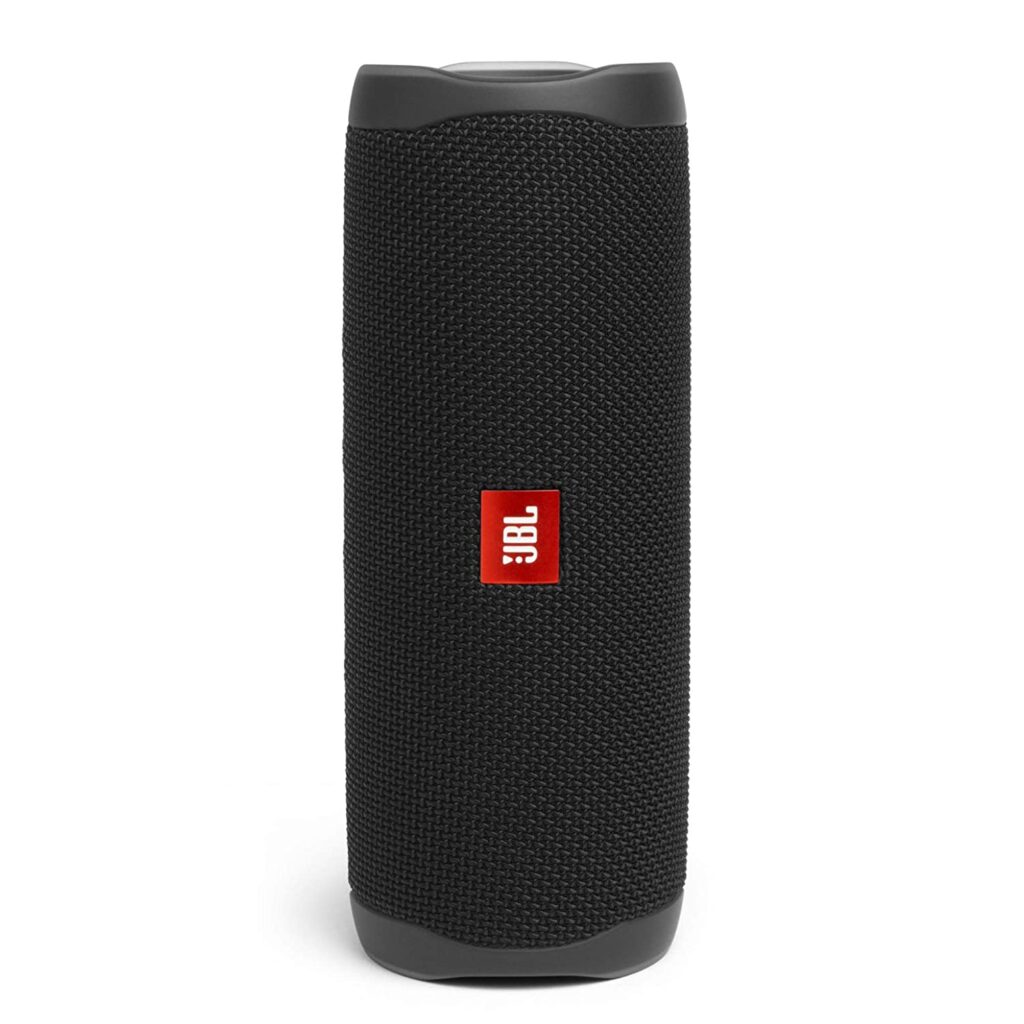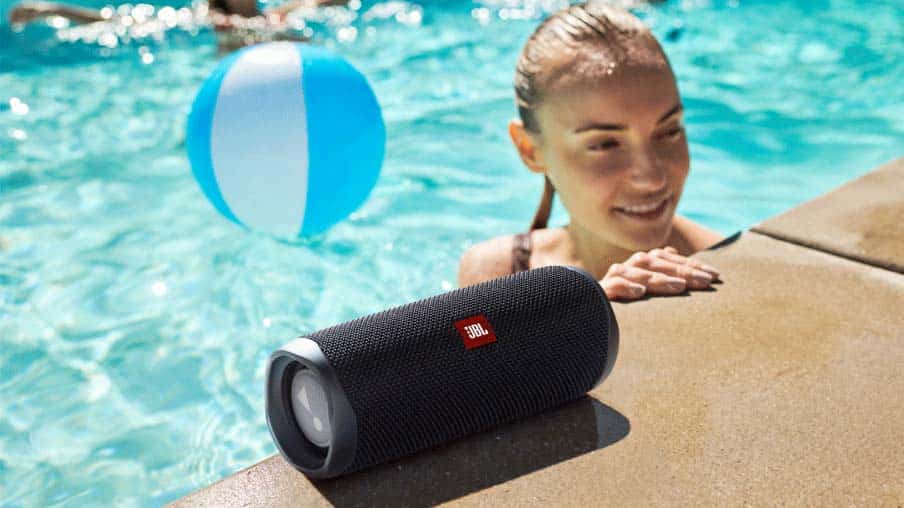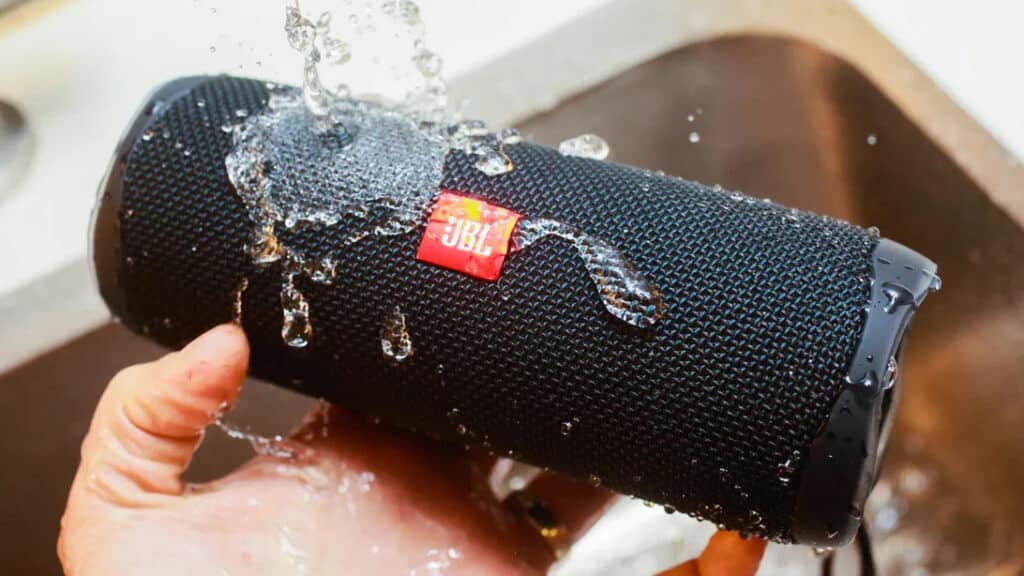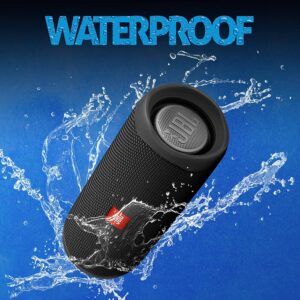The JBL Flip 5 Bluetooth speaker is only an incremental change to the Flip 4, but it is still one of the greatest waterproof speakers available today, even though the music stays the same.
So, what value would the Flip 5 add to the table? For one thing, the price is higher, but this is offset by a new charging port and considerably improved sound quality. While current Flip speaker owners may not find them to be an appealing upgrade, if you’re new to the scene and need something small, simple, and sweet-sounding, you can do a lot worse.
What you will see here?
Price and availability

The MSRP of the JBL Bluetooth speaker is now $119, and you can get it for the same price if you order it directly from JBL. There’s a huge variety of colors to select from, and if you’re willing to spend $149, anyone can even customize your own with bespoke patterns and lettering.
The simple black model is also available for $94 on
Design

You’d have a difficult time recognizing a Flip 5 from a stack of Flip 4s because they appear so identical. The 7.1 x 2.9 x 2.7-inch Flip 5 is slightly larger than that of the 6.9 x 2.75 x 2.7-inch Flip 4 & slightly smaller than the Ultimate Ears Boom 3 at 7.2 x 2.8-inch. The Flip 5 is also lighter than the Boom 3, weighing just 1.2 pounds.
The Flip 5 has you covered if you really want your speaker color to reflect your personality. It is available in 12 color variations and may be customized (for an additional $30).
The JBL Flip 5 Bluetooth speaker contains a few buttons for play/pause, volume, and PartyBoost to connect to another JBL speaker, as well as a power button, Bluetooth pairing, and a USB-C charging connector. The battery level is indicated by an LED strip.
The Flip 5 does not have an auxiliary input like earlier Flip models, therefore you can just connect over WiFi.
Features
Whatever finish you choose, you’ll get the same basic, no-frills portable speaker. There’s Bluetooth playback, of course (click the dedicated button to pair); JBL’s PartyBoost feature, which pairs Flip 5 and Pulse 4 speakers enabling stereo pairing and concurrent playback in the associated JBL Connect app; as well as a USB-C charging port – and that’s all.
JBL has chosen not to include an AUX connection for hardwiring a smartphone or other audio device, as well as a built-in microphone for hands-free calls & Siri and Google Assistant activation.
Given their existence here on Flip 4, they’re both surprise absences, though the Flip 4’s support for Bluetooth 4.2 so over the newer 5.0 standard is likely rarer. It’s hardly the end of the world, but it does mean you’ll miss out on quicker data rates and a 240m wireless range (4.2 provides a range that is roughly four times shorter.).
The charging speed for the Flip 5 has been enhanced by JBL. A full charge, which provides 12 hours of continuous, only takes 2.5 hours instead of 3.5 hours.
A higher (20-watt) power output and a newly developed, racetrack-shaped 44mm driver with such a larger cone area for enhanced sonic amplification appear to promise an improvement in sound quality.
JBL Flip 5: Performance

The JBL Flip 5 boasts excellent sound quality overall, with amazing bass for such a speaker of its size. It Flip 5 has greater bass and a somewhat wider sonic dispersion than Flip 4. However, the Boom 3 has a more powerful sound.
On “Shameika,” Fiona Apple’s vocals were loud and rich just above clanging instruments and rhythms, and Taylor Swift’s voice on “the last great American dynasty” was warm and easy to hear. Sufjan Stevens’ “Video Game” had a sharp snare and cymbal sound. On Jason Isbell’s “What’ve I Done to Help,” the bass was deep, and the chords acoustic guitars were sharp but not overly bright.
The Flip 5 is quite loud, reaching around 96 decibels at maximum volume. This is slightly higher than the Flip 4. However, at such volume, the music became distorted; the sound was best at around 85 dB.
Ruggedness

The JBL Flip 5 does have an IP7 waterproof classification, which means it can be submerged in water for up to 3 feet.
I dipped it in a sink full of water and it was fine. The Boom 3 is also submersible.
Battery life
JBL claims that the JBL Flip 5 can be played for 12 hours on even a full charge (much like the Flip 4), although this appears to be an underestimation of its true capabilities. It still has 34% of its full charge after some more than 5 hours of mostly low volume use. The Boom 3 has 15-hour battery life.
Wireless and setup

The JBL Flip 5 easily connected to my phone and maintained a strong signal up to 75 feet indoors. It employs Bluetooth 4.2 rather than the most recent version, 5.0, however, this has no impact on performance.
The JBL Portable app (previously JBL Connect) allows you to update the firmware & control PartyBoost. This allows you to connect another JBL speaker and then either mirror or utilize each speaker as a left/right stereo pair. You can also use the play/pause button and access Siri instead; the speaker does not have a built-in voice assistant.
The software doesn’t do much else. The Ultimate Ears app doesn’t include any EQ, sound modes, or even other features.
Conclusion
The Flip has been one of the greatest portable Bluetooth speakers since its first edition. The JBL Flip 5 performs admirably enough to maintain it in the lead. It blends a lightweight design with above-average bass. This version is slightly more expensive than Flip 4, however, it is usually less expensive than the Boom 3.
If you already own a Flip 4, you likely shouldn’t need to update; the main differences are the color options and USB-C charging. The choice between the Flip 5 as well as the Boom 3 boils down to portability vs. sound. Because Flip 5 is more portable, the Boom 3 has a slightly superior overall sound. You’ll be content in either case.
















